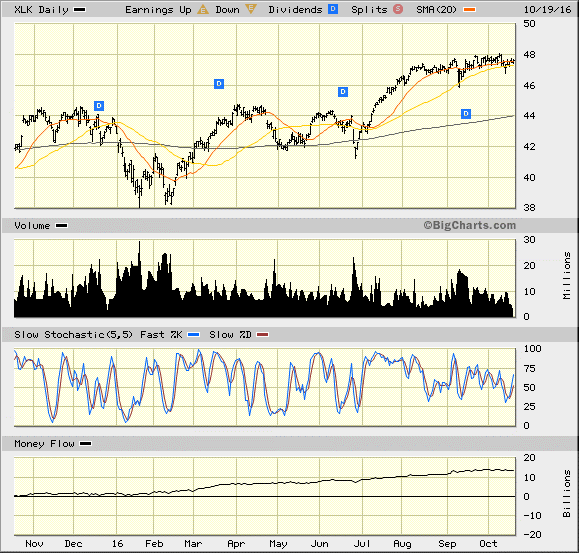Taking the Fed at Face Value Keeps Markets Guessing
After all the hype and buildup, the Fed voted 7-3 to leave the target range for the fed funds rate unchanged at 0.25% to 0.50%. Voting to take action to hike rates were Kansas City Fed President George, Cleveland Fed President Mester and Boston Fed President Rosengren, each of whom prefer to raise the target range for the fed funds rate to 0.50% to 0.75%. The three dissents stand out as a pretty good indication that the market is going to keep getting tossed and turned by ongoing rhetoric from Fed officials between now and the Dec. 13-14 Federal Open Market Committee (FOMC) meeting.
In the post-FOMC-meeting commentary, language employed in the policy statement itself was pretty noncommittal in terms of likely next steps. It was said that the case for a rate hike has strengthened but that the committee decided, for the time being, to wait for further evidence of continued progress toward its objectives. So without using the ad-nauseam Fed self-description of being “data dependent,” this is exactly how the market received the message. Since most of the recent data leading up to the Fed meeting has been light of forecasts, it stands to reason the Fed will take a three-month seat on the bench, giving markets a green light to trade higher.
Any normalization of rates that might be initiated in December is still apt to occur at a gradual rate. The median projection for the fed funds rate is 0.6% for 2016, 1.1% for 2017, 1.9% for 2018 and 2.6% for 2019. Notably, the median projections for 2016-2018 have been reduced by 25 basis points to 50 basis points from the projections made in June. This pushing out on the timeline and pushing down of the expected level for rates on that timeline continues to confound the Fed, but not the equity or high-yield markets.
As everyone is well aware by now, any Fed projection can be taken at face value, yet one can’t assign deep value to them knowing the Fed doesn’t have a very good forecasting record. So then, what does Janet Yellen’s latest convoluted commentary mean for the market? It puts investors in a position of having to continue to play the guessing game, but not until after the November elections will this be a serious topic of discussion. Thank God!
Moving forward, OPEC meets this week and expectations for a hard stop cut in oil production are low. If this meeting had any teeth, WTI crude would be trading north of $50/bbl and not at its current level of $46/bbl. Investors should be wary of another wave of dividend cuts by energy companies by the year’s end. Without a Fed rate hike, bank stocks will also likely underperform and if Hillary sees her poll numbers improve, health care stocks will also lag for obvious reasons. And lastly, with roughly 60% odds of a rate hike slated for December, bonds and bond-equivalent assets will pay interest, but price appreciation will be difficult.
For investors seeking yield, the narrowing of the field of sectors likely to outperform would include selling covered calls on technology stocks, which we employ every week in Quick Income Trader. Every week, I highlight the leading tech stocks that are trading under $70 and have liquid call options traded for which we can sell call option premium back to the market for 5-7% monthly income.
A view of the weekly chart for the widely traded Technology Select Sector SPDR Fund (XLK) shows a very bullish uptrend following a long base-building period. Why be mired in a broader index like the S&P where inherent risks face the energy, financial and health care sectors when capital can target a breakout sector like technology? A picture says a thousand words and a bullish chart can mean real money.
Be it leading semiconductor, cyber security, digital payment, optical network components, online game publishing or cloud computing software companies, opportunities are aplenty for spicing up one’s income portfolio by being invested in the hot stocks that pay out fat call premium month after month. With the Fed on hold and the elections in the wings to keep a lid on the market, keeping capital hard at work in the one sector where there is earnings momentum, relative strength and takeovers being reported almost daily, using a high-tech covered-call strategy such as that of Quick Income Trader is the year-end plan to run with.
In case you missed it, I encourage you to read my e-letter column from last week about how the lending business can generate profitable returns for investors. This article, and many other past Dividend Investing Weekly e-letters, can be found on StockInvestor.com, which is the new home of Eagle Daily Investor. I invite you to bookmark the site and follow it on Facebook and Twitter.


